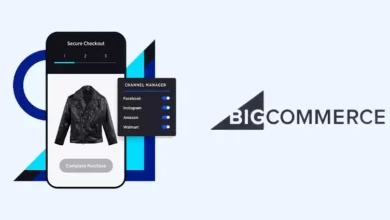
Harnessing the Power of Law Animation in Legal Practices
In the dynamic world of law, staying ahead involves not just understanding the intricacies of legal proceedings but also effectively communicating them. This is where law animation steps into the spotlight, offering a transformative approach to how legal concepts and processes are presented and understood.
The Evolution of Legal Presentations
Traditionally, the complexity of legal matters has been a significant barrier to clear communication, especially in courtrooms and client meetings. Enter the era of digital visualization, and we witness a pivotal shift towards more accessible and engaging legal presentations. Here’s how animations are making a difference:
Making the Complex Simple
- Visual Learning: Many people are visual learners; law animations cater to this by breaking down complex legal processes into digestible visuals.
- Attention Grabbing: Unlike static images or text-heavy documents, animations capture and hold the viewer’s attention, making crucial information more memorable.
Enhancing Client Understanding
- Clarifying Legal Strategies: Animations can depict various legal strategies and their potential outcomes, helping clients make informed decisions.
- Demystifying Legal Jargon: Through animated scenarios, legal jargon is translated into everyday language that clients can easily understand.
The Role of Law Animation in Courtrooms
In high-stakes environments like courtrooms, the clarity provided by animations can be particularly impactful. By illustrating scenarios, timelines, and legal principles, animations serve as powerful tools to support arguments and evidence presentations.
Strengthening Case Presentations
- Illustrating Evidence: Complex evidence can be made more comprehensible through detailed animations, aiding in clearer interpretations and stronger arguments.
- Emphasizing Key Points: Animations can highlight the most crucial aspects of a case, ensuring they are clearly understood by judges and juries.
The Creative Process Behind Legal Animations
Creating effective law animations involves a meticulous process that blends legal knowledge with artistic skill. Here’s a glimpse into how these animations come to life:
Conceptualization and Storyboarding
- Legal Input: Attorneys collaborate with animators to ensure that the animations are legally accurate and relevant.
- Storyboard Creation: This initial phase outlines the animation, framing the narrative and ensuring that all critical points are covered.
Design and Development
- Artistic Design: Animators use sophisticated software to create visually appealing and contextually appropriate animations.
- Feedback Iterations: Regular reviews by legal professionals ensure the animation remains on point with the legal narrative.
Choosing the Right Legal Animation Services
Not all animation services are created equal, especially when it comes to legal specifics. When selecting legal animation services, it’s essential to consider:
- Expertise in Legal Content: Choose a service that understands the nuances of legal content and can communicate effectively through animations.
- Quality and Clarity: High-quality animations that deliver clear, concise, and accurate representations of legal concepts are non-negotiable.
Future Trends in Law Animation
As technology advances, so too does the potential for more immersive and interactive legal animations. Here’s what might be on the horizon:
Interactive Animations
- User Interaction: Future legal animations could allow viewers to interact with the content, choosing different scenarios to see various legal outcomes.
- Enhanced Engagement: Interactive elements can make legal presentations even more engaging and educational.
Integration with Other Technologies
- Virtual Reality: Imagine stepping into a virtual courtroom where you can experience a legal process firsthand.
- Augmented Reality: Overlaying animations on real-world environments can help explain how specific laws apply in different contexts.
Conclusion: The Impact of Court Animation on Legal Outcomes
Incorporating court animation into legal practices is more than just a trend—it’s becoming a best practice for presenting cases effectively and engagingly. As the legal field continues to evolve, the use of animations is likely to expand, becoming an integral part of legal storytelling and communication.
In conclusion, law animation is not just an enhancement to the way we understand legal proceedings; it is a revolutionary tool that bridges the gap between legal complexities and client understanding. Whether for client consultations, courtroom presentations, or legal education, animations offer a vivid, impactful way to convey information, making them an invaluable asset in any legal professional’s toolkit.




